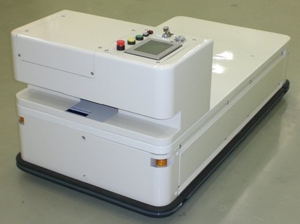Oct 15 2010
Hitachi Plant Technologies has advanced a self-regulating automatic guided vehicle (AGV) which is capable of detecting its location and directing independently throughout a surface, employing an electronic map eliminating the necessity of providing continual instructions.
The traditional AGVs are directed employing cables, magnetic tapes, mirrors or markers and for making any modifications in the routes they have to be shifted and the instructions have to be re-structured.
 Autonomous AGVs
Autonomous AGVs
The advanced laser distance sensing element in the innovative self-guiding AGV is advantageous as it gains data regarding the position by itself and deploys its integrated computer system to create an electronic representation of the way and identifies the actual location autonomously. The routing modifications can be carried out immediately and the production lines can be re-aligned easily without bothering about the AGV tracks.
The traditional AGVs will stop functioning when any obstruction occurs, whereas the automated AGVs will automatically transmit a perceptible warning signal to send an audio alert to get rid off the hindrances. If this fails to perform within a limited duration the AGV itself will start navigating around the barrier.
The AGVs which use cables and magnetic tapes identify the routes using magnetic fields for generating control signals and restrict its usage in environments with magnetic components or steel plates. The electronic mapping functionality in the autonomous AGVs facilitates its deployment in any flooring.
This innovative AGVs feature laser distance sensing elements for instruction, coupled with reliable sensors that make them to slow down or stop, based on their distance from the obstacle. If the obstacle is at a long distance, they will travel with great speed and slow down when nearing it resulting in rapid average speeds. According to the company the AGV can travel with a speed of about 7.2km/h in less crowded areas.